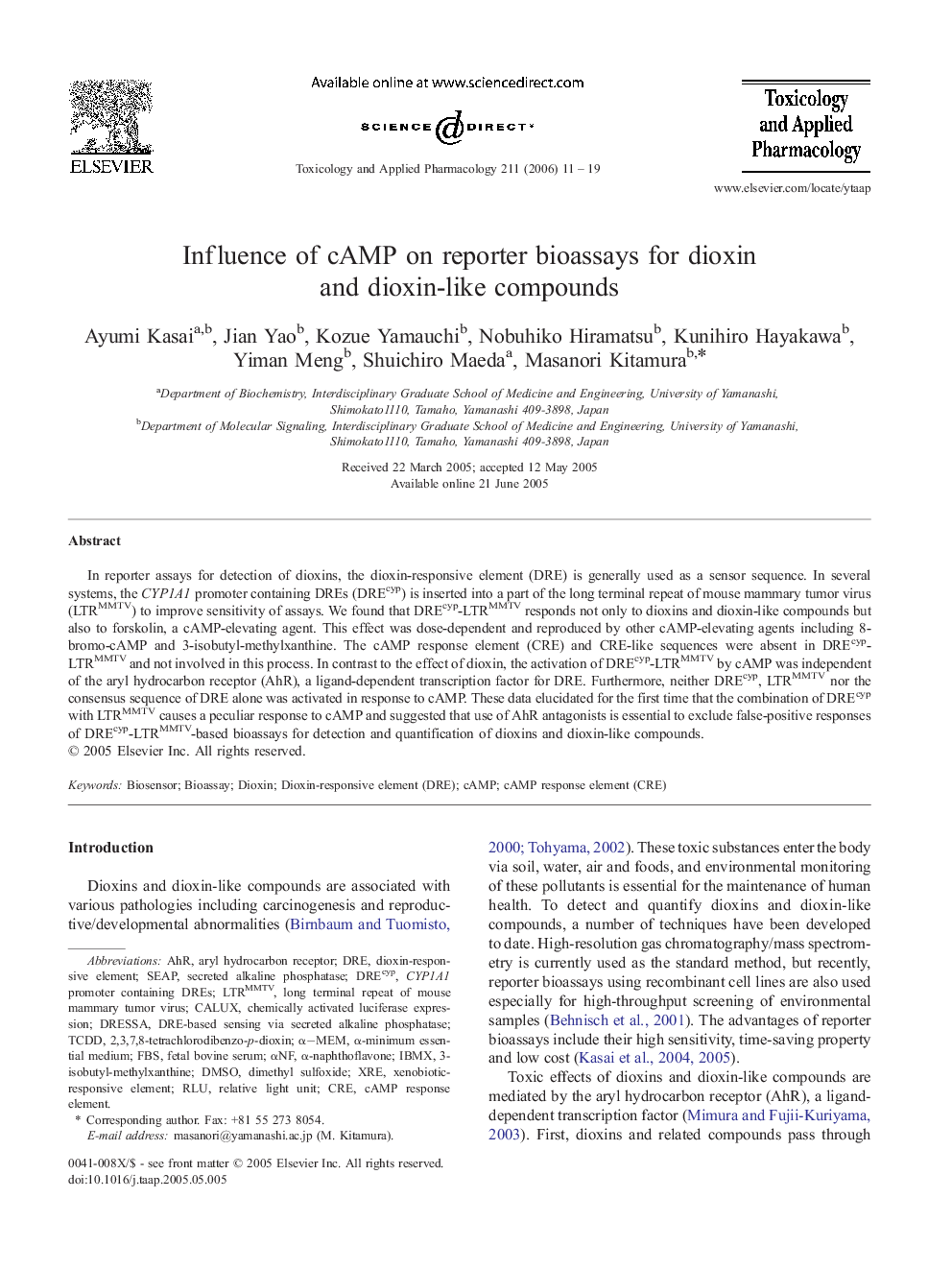| Article ID | Journal | Published Year | Pages | File Type |
|---|---|---|---|---|
| 2571966 | Toxicology and Applied Pharmacology | 2006 | 9 Pages |
In reporter assays for detection of dioxins, the dioxin-responsive element (DRE) is generally used as a sensor sequence. In several systems, the CYP1A1 promoter containing DREs (DREcyp) is inserted into a part of the long terminal repeat of mouse mammary tumor virus (LTRMMTV) to improve sensitivity of assays. We found that DREcyp-LTRMMTV responds not only to dioxins and dioxin-like compounds but also to forskolin, a cAMP-elevating agent. This effect was dose-dependent and reproduced by other cAMP-elevating agents including 8-bromo-cAMP and 3-isobutyl-methylxanthine. The cAMP response element (CRE) and CRE-like sequences were absent in DREcyp-LTRMMTV and not involved in this process. In contrast to the effect of dioxin, the activation of DREcyp-LTRMMTV by cAMP was independent of the aryl hydrocarbon receptor (AhR), a ligand-dependent transcription factor for DRE. Furthermore, neither DREcyp, LTRMMTV nor the consensus sequence of DRE alone was activated in response to cAMP. These data elucidated for the first time that the combination of DREcyp with LTRMMTV causes a peculiar response to cAMP and suggested that use of AhR antagonists is essential to exclude false-positive responses of DREcyp-LTRMMTV-based bioassays for detection and quantification of dioxins and dioxin-like compounds.
